Are you ready to create the garden of your dreams? Landscaping ideas for Sandy Soil can turn any outdoor space into an oasis, and you don’t even have to leave your backyard. In this guide, we will provide all the information and useful tips you need to bring your sandy soil landscaping vision to life! From design ideas to how-tos, get ready to explore all the options available for transforming your yard into a beautiful, beachy paradise.
How to tell if you have sandy soil
There are a few clues that can help you identify sandy soil.
To start, take a look at the texture of your soil and feel it between your fingers. If the grains are very fine and quite soft, then chances are you’re dealing with sandy soil. You may also be able to see sand particles if you dig into the surface.
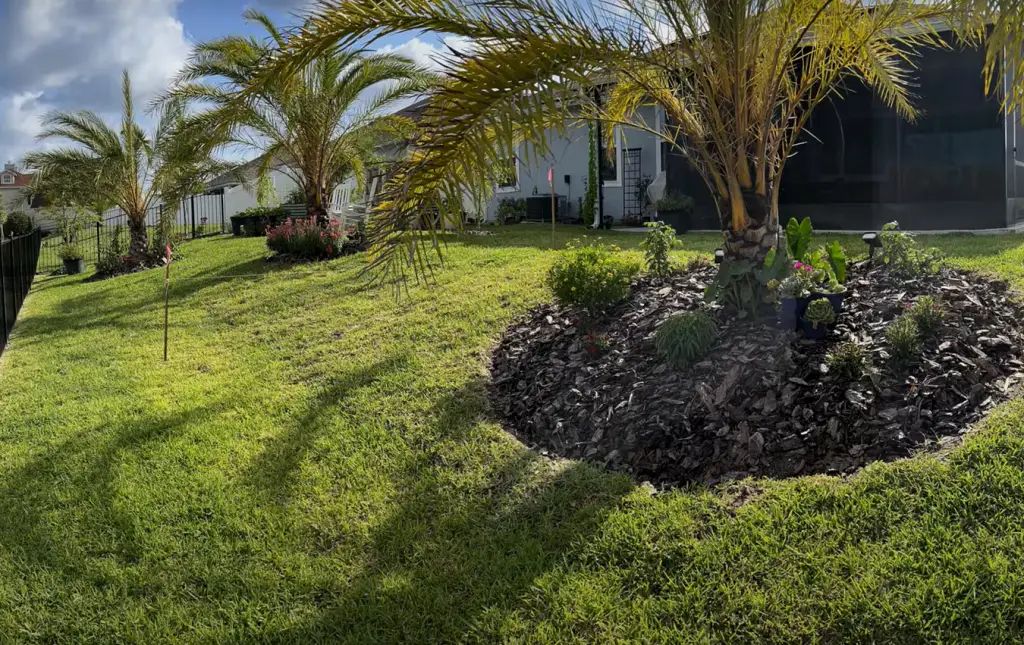
You can also check for drainage by watering an area of the garden and watching how quickly it dries out. Sandy soils usually drain very quickly – much more so than other types like clay or loam.
Finally, try doing a simple pH test with either a physical kit or an at-home version.
The challenges of sandy soil?
Sandy soil lacks the nutrients and structure needed for plants to thrive. It can also dry out quickly during summer months, draining essential moisture from plants just when they need it most. Additionally, sandy soil is prone to wind erosion which can make maintaining your garden difficult.
Luckily, there are several ideas that can help you overcome these challenges and create a beautiful outdoor space. Here are some of our favorite tips:
Amend the Soil
It’s important to amend sandy soils by adding organic matter such as compost or shredded leaves to help increase its nutrient content and structure. This will give your plants a better chance of survival and make it easier for them to take up water and nutrients.
Mulch Your Plants
Mulching your plants is another great way to protect the soil from erosion and retain moisture. Spread a layer of mulch two to three inches thick around all the plants in your garden, making sure that it reaches the roots of each plant. This will help keep the soil cooler and reduce evaporation so that more water stays available for your plants when they need it most.
Water Properly
When watering sandy soils, it’s important to do so deeply but infrequently as opposed to shallow, frequent watering which can lead to nutrient leaching and soil erosion. Water your plants slowly and for a long enough period of time that the water can reach deep down into the root zone.
Plant Appropriate Species
When landscaping with sandy soils, you should consider choosing plant species that are adapted to dry conditions such as succulents, cacti, shrubs, perennials, grasses, and trees.
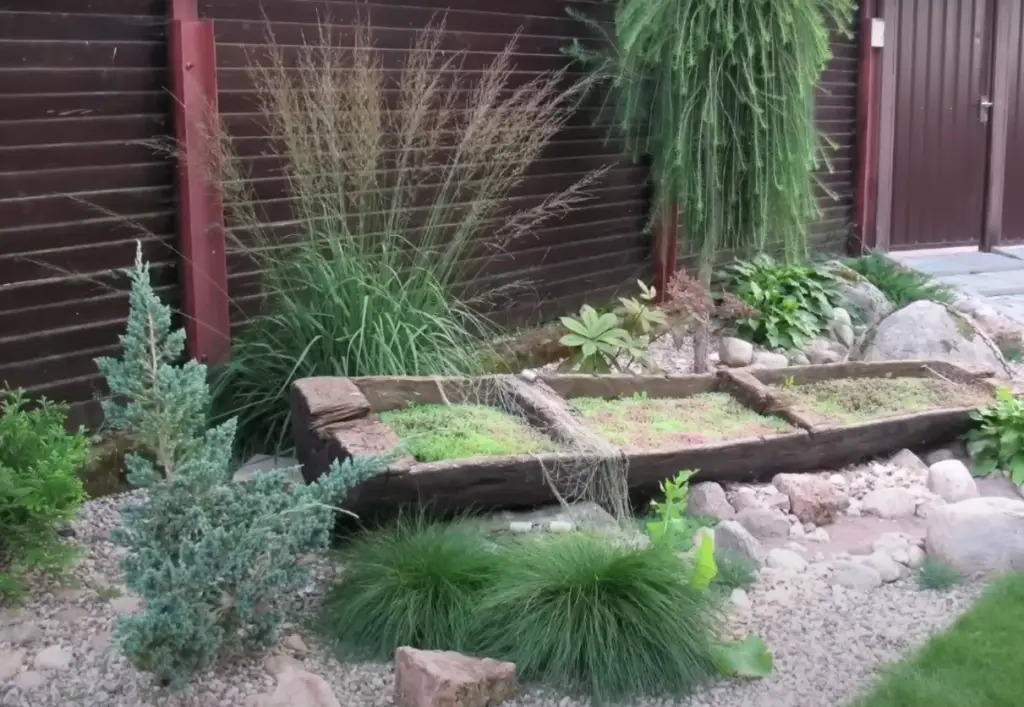
These types of plants are better able to take advantage of the nutrients found in sandy soils and tolerate periods of drought more effectively than other species.
Plants that thrive in sandy soil
If you’re looking for plants and flowers that will survive in sandy soil, there are several options to choose from. Groundcovers such as sedum, blue star creeper, creeping Phlox, and sweet woodruff do well in sandy areas. Perennials like coneflower, black-eyed Susan, coreopsis, bee balm, Shasta daisy also thrive in sandy soils. Herbs such as oregano, sage, and thyme can be grown successfully in sand. These herbs are hearty enough to withstand the harsh conditions of poor drainage and lack of nutrients found in these soils. Additionally, many vegetables grow well in sandy soils including peppers, tomatoes, squash and cucumbers. When growing vegetables in sandy soil, it is important to add compost or organic matter to the soil before planting.
Another option for landscaping in sandy soils is using drought-tolerant plant varieties such as cacti and succulents. These plants are well-suited to the dry conditions of the sandy soil and require little water once established. Ornamental grasses also do well in this type of environment, providing a splash of color and texture year-round. There is no shortage of options when it comes to landscaping with sandy soils!
How Can Poor Sandy Soil Be Improved for Landscaping?
By adding organic materials such as compost, leaves and grass clippings, you can significantly improve the soil’s ability to retain moisture and nutrients. You can also add slow-release fertilizers that will help keep your plants healthy over time without any additional input from you.
Mulching is an excellent way to further improve sandy soils. Mulch helps to reduce the evaporation of water from the soil, keeping more moisture available for your plants. It also helps to protect roots from extreme temperatures during both hot summers and cold winters.
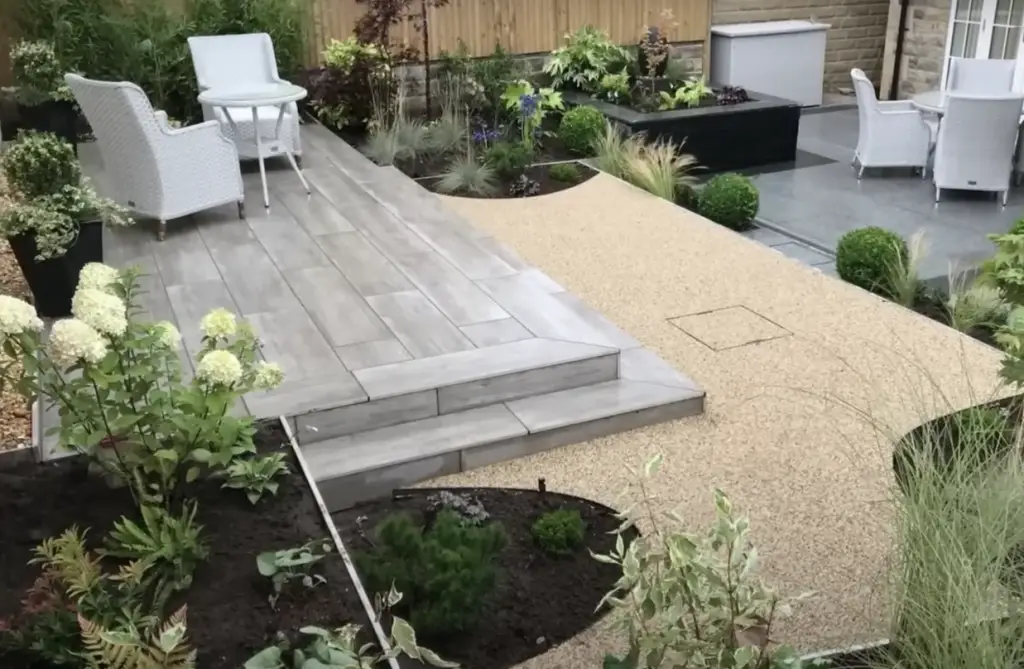
It is important not to overwater or overfertilize your plants when gardening in sandy soils. Sandy soils drain quickly and easily, meaning that their moisture levels drop quickly. As such, it is important to ensure you only water your plants when they really need it and stop fertilizing them once the nutrients start to run off in the soil.
What Fertilizer Is Best for Sandy Soil?
When it comes to fertilizing sandy soil, you want to make sure that the fertilizer you use is well-suited for sandy soil. One of the best types of fertilizer for sandy soil is one that contains a high percentage of nitrogen and phosphorus but also has some minor elements. A balanced blend of organic matter such as composted manure, bone meal, or fish meal can also help improve nutrient availability and water retention in sandy soils. It is important to remember when using any kind of fertilizer that it should be applied according to the directions on the label and not overused. Too much fertilizer can have negative effects on your plants.
For good results with Sandy Soil landscaping, choose slow-release fertilizers that are designed to provide nutrient availability over time. Slow-release fertilizers will help reduce the chance of runoff and leaching, both of which can lead to waste and environmental pollution.
Another option for fertilizing sandy soil is to use liquid fertilizer. Liquid fertilizers are easy to apply and can be absorbed quickly by plants; however, they should not be used too often as they can cause a buildup of salt in the soil. For best results, it is recommended that liquid fertilizer be applied every two weeks during the growing season.
How Often Should You Water Your Lawn with Sandy Soil?
When it comes to watering your lawn with sandy soil, you should water it deeply and infrequently. Sandy soils absorb water quickly and its nutrients leach through the soil quickly as well. Therefore, by avoiding frequent shallow watering, you will be able to ensure that the soil can properly absorb all of the available nutrients.
When you do water your lawn with sandy soil, aim for a deep soak that reaches all the way down to the root level. This ensures that enough moisture is absorbed into the ground so that roots are able to reach further down for more nutrients during dry periods. You can also use mulch in between waterings to help retain some moisture beneath the surface.
In addition, make sure you adjust your watering schedule depending on the weather and temperature. If it’s a hot and dry summer, you may need to water a bit more often. On the other hand, if it’s cooler or wetter than usual, you can back off on your watering schedule a bit.
Sedum
Sedum is an easy-to-maintain, low-maintenance plant that can survive in sandy soil.
They come in a variety of shapes and sizes, from small groundcover plants to tall upright varieties. They also bloom with star-shaped flowers during most months of the year, adding some bright color to your landscape. Keep in mind that sedum may suffer damage if there is too much water or not enough sunlight. But overall they tend to be quite resilient and make an excellent addition to any landscaping project!Lavender
Lavender is the perfect plant to start your landscaping project with sandy soil. It’s hardy, drought-tolerant, and incredibly fragrant!
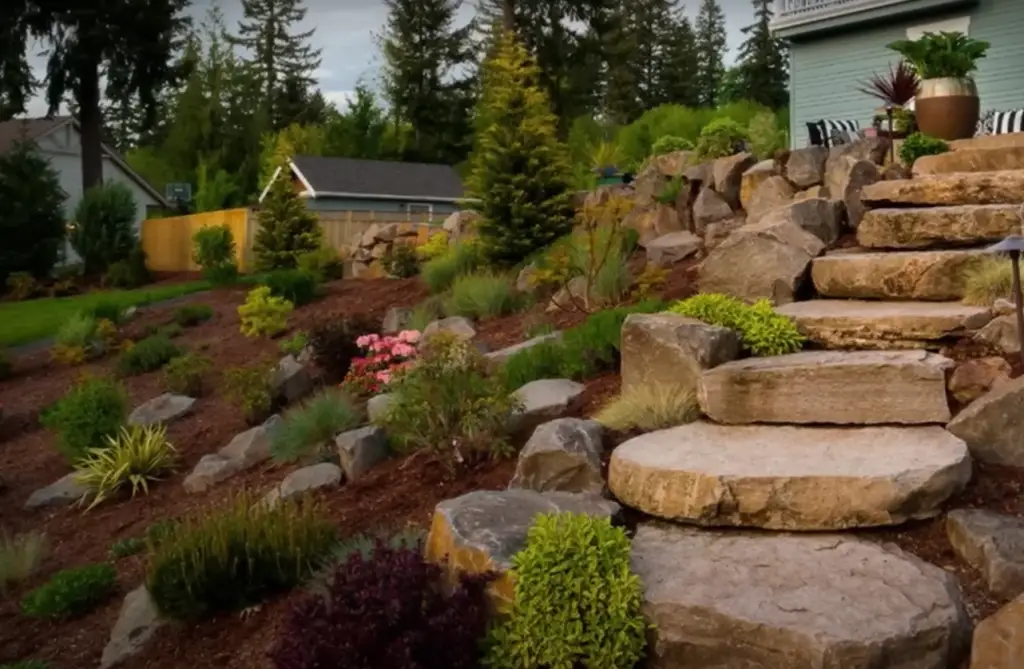
Plant lavender in well-drained beds with lots of sun and you’ll be rewarded with a beautiful display of foliage that lasts all year round. Lavender does best when planted in mass, so take advantage of its size and fullness when choosing where to place it. You can also prune it back whenever necessary for maintenance. Dried lavender flowers are great for adding an aromatic touch to potpourri or herbal sachets!
Artemisia
Artemisia is a genus of shrubs that thrive in sandy soils and can be a great addition to any garden. These plants come from all over the world, so you’re sure to find something suitable for your climate and soil type. They generally prefer full sun, but some varieties tolerate partial shade. Artemisia is an excellent choice for dry, sandy areas because it doesn’t need much water or fertilizers at all. It’s also drought-tolerant and can handle extreme temperatures with ease. Because of its low-maintenance requirements, it’s perfect for those looking for easy landscaping ideas for sandy soil. It will add texture and visual interest to any garden space while requiring minimal effort on your part! Additionally, many species of Artemisia are strong fragrant plants, so you can enjoy the scent of fresh herb gardens throughout your outdoor space.
Carrots
Carrots and beets are great vegetables to grow in sandy soil. They both require full sun and plenty of drainage. Sandy soil won’t retain water as well as other soils, but it is light enough that carrots can easily form long roots without becoming too compacted. Beets also prefer light soil, so they do quite well in sandy soils. Both crops can be planted in the spring or late summer for a fall harvest. To get the most out of your crop, add compost to your sandy soil prior to planting to help increase nutrient levels and water retention.
Potatoes
If you’re looking for a hardy, low-maintenance vegetable to grow in your sandy soil, potatoes are a great choice. Potatoes require little maintenance and can be planted with minimal effort. They thrive in loose sand, which allows them to spread easily and form healthy tubers. To get started, plant your potato seedlings in 4-6 inch deep holes filled with compost or manure. Once they start to sprout leaves, add more soil around the stem until it reaches 6 inches high. Water regularly and keep an eye out for pests!
Radishes
Radishes are a great choice for landscaping with sandy soil. They are fast-growing, require minimal care, and are hardy enough to withstand sandy soils. Radishes can be planted either in the ground or in containers. If planting in the ground, be sure to work plenty of organic matter into the soil to help retain moisture and keep it from drying out too quickly.
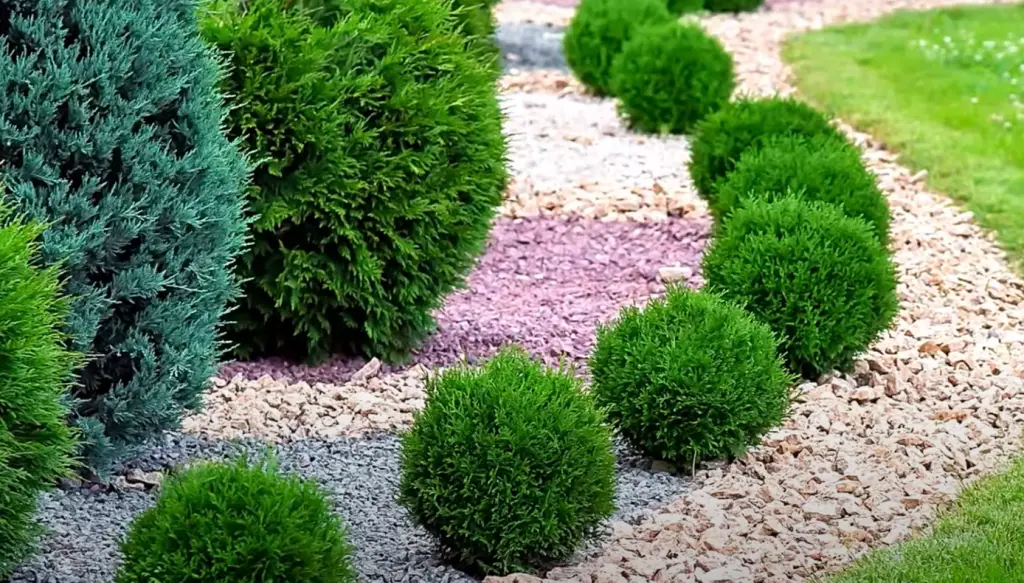
When watering radishes, do so deeply and infrequently — once every other day is usually adequate for their needs. In terms of harvesting, you’ll know they’re ready when they look nice and plump! Enjoy them as snacks or add them to your salads for a burst of flavor.
Cucumbers
When it comes to sandy soil, cucumbers and squash are a great choice of crops. These plants thrive in sandy environments, since their roots can easily penetrate the loose soil. Because soil drainage tends to be better with sandy soils, these plants don’t need as much water as those grown in clay or loam soils. Sandy soils also warm up quickly during the warmer months, making them perfect for growing cucumbers and squash. When planting your cucumber and squash crops, make sure to amend the soil with plenty of compost; this will provide essential nutrients that these vegetables need to grow healthy and strong. Additionally, try planting companion crops like corn and beans around your cucumbers and squash; this will help create a more balanced ecosystem, allowing your plants to grow better.
Red chokeberry
Red chokeberry is a deciduous shrub that can be used in sandy soil landscaping for its vibrant color and fast-growing nature. It grows best in moist, but well-drained soils, making it an ideal choice for sandy soil landscapes. The red chokeberry does not require frequent watering or fertilizing and is very hard to heat and drought conditions. It produces small white flowers during the summer months followed by bright red berries which provide food for wildlife throughout the fall and winter seasons. Red chokeberry also requires minimal pruning although some dead branches may need to be removed annually to maintain an attractive shape. Native to North America, this plant provides a beautiful addition to any landscape with its deep green foliage turning into brilliant shades of orange and red during the fall months. It is also a great choice for windbreaks, privacy screens, or hedges.
Butterfly bush
The butterfly bush is an attractive option for landscaping sandy soil. It has a compact size and grows quickly, making it ideal for borders or as part of larger flower beds.
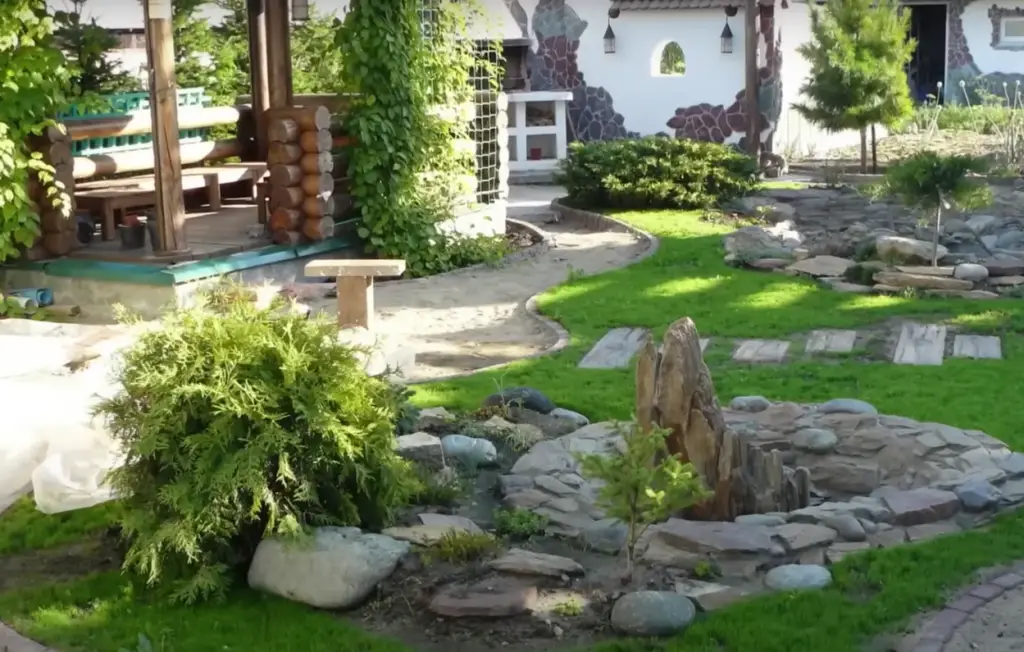
The fragrant flowers attract butterflies to your garden, so you can enjoy wildlife in your landscape even if the soil isn’t ideal. You’ll need to give the butterfly bush full sun and make sure it gets enough water during dry spells, but other than that, it’s low-maintenance and easy to grow. Plant several varieties together to create an eye-catching display in your yard!
Daylilies
Daylilies are a great choice for landscaping sandy soil. Daylilies have long, thin roots that easily penetrate the soil and can create a strong hold in even the loosest of soils. They’re also drought-tolerant, so they won’t require too much additional watering. Plus, their beautiful flowers bring a lot of color to your landscape! However, daylilies do need part sun or full sun to bloom well, so make sure you place them where they will get enough light.
Giant allium
Giant alliums are a great choice for landscaping sandy soil. While it may take a while to get the soil ready, once you do, these plants thrive and add a beautiful, eye-catching display to your landscape. Giant alliums can reach up to 1.5 meters in height and have big purple flower heads that look amazing when planted in groups. To ensure they flourish, make sure to water them regularly and keep the soil moist. Additionally, supplementing with slow release fertilizer every two weeks helps promote better growth and blooms.
Sweet alyssum
Sweet alyssum is an annual flower that’s perfect for adding color to sandy soil. It comes in many colors and blooms from early summer until the first frost of the season. Sweet alyssum grows well in full sun and can tolerate some light shade. You’ll need to water it regularly to keep it looking its best, but other than that, this low-maintenance plant requires little care. Pinching off dead flowers will help extend the blooming time and prevent self-seeding. Plant sweet alyssum near pathways or driveways where you can enjoy its fragrance as you pass by! Another plus? Sweet alyssum helps attract beneficial insects like bees and butterflies!
Flowers Landscape Design For Sandy Soil
When it comes to landscaping with sandy soil, adding flowers can be a great way to bring life and color into your outdoor space. Flowers that thrive in sandy soils include daisies, zinnias, marigolds, cosmos, and snapdragons.
For long-lasting flowering plants in sandy soil, consider ornamental grasses such as purple fountain grass or feather reed grass. These will provide continuous structure throughout the year and will also give off a beautiful look without requiring additional maintenance.
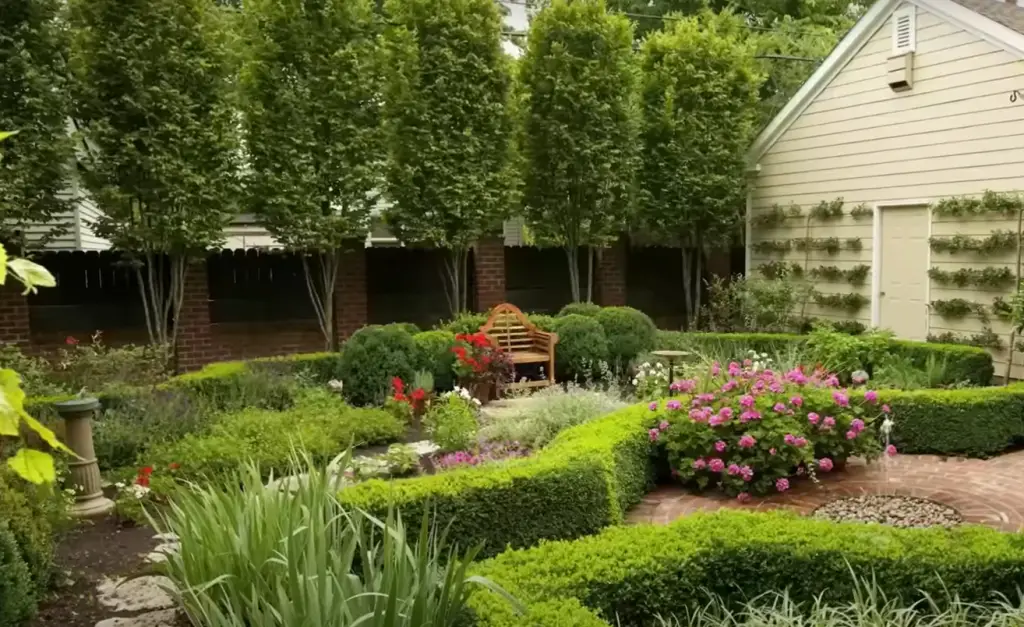
To add a bit of color to your landscape design for sandy soil, try planting perennials like Black-eyed Susans or daylilies which are both drought tolerant and require little maintenance. Other flower options for sandy soils include lilies, sedums, and asters.
When planting flowers in sandy soil, it is important to provide plenty of water to ensure that they thrive. Sandy soils require more frequent watering than other types of soil so make sure to check the moisture level regularly and provide extra water whenever necessary. Additionally, you should consider adding compost or mulch into the soil to retain moisture and also help with weed control.
Magenta Backyard Bed
One of the most popular landscaping ideas for sandy soils is to create a backyard bed. This can be done by digging out an area and filling it with soil that contains more clay particles, such as loamy soil. Once you have added this soil, you can then add mulch or other materials to help keep the moisture in and give the plants something to grow in. You can also use flowers, shrubs, trees, grasses, and other types of vegetation to give your backyard bed a spectacular look. If you are looking for something unique to fill up your backyard bed with then try adding rocks or stones around the edges of the bed. This will provide both texture and color to your landscape design. Just make sure that whatever you choose is appropriate for the type of soil in your backyard.
Seaside Landscaping
If you live near the ocean, consider incorporating some of that coastal charm into your landscaping. Sandy soil and seaside air offer plenty of opportunity for beautiful landscapes. Use low-growing shrubs like dwarf junipers to create texture and color along beachy pathways. Edge beds with grasses or ornamental grasses for added interest. Plant flowering perennials such as lupines and coneflowers to provide a rainbow of seasonal hues. Combine these elements with hardscaping features such as shells, driftwood, or sandstone boulders to enhance the natural shoreline look. For a dramatic effect, add dramatic lighting fixtures like nautical lanterns or solar path lights to highlight the area at night.
Zinnia Rock Garden
If you’re looking for an exotic, low-maintenance landscaping idea for sandy soil, a zinnia rock garden might be perfect for you. The colors of the zinnias and rocks will add a unique touch to your outdoor area that will impress your friends and family. All you need is some brightly colored zinnia flowers and some large stones. Plant the flowers close together in an area of sandy soil and scatter the stones throughout the garden. Make sure to water them regularly so they stay healthy!
Raised Bed For Front Yard Sandy Soil Landscaping
Raised beds are one of the most popular landscaping ideas for sandy soil as it is often difficult to get plants to grow in this type of soil. The raised bed can help keep the sandy soil compacted and water more easily absorbed. To create a raised bed, use pressure-treated lumber or stone blocks to form the edges and fill them with sand and peat moss. Plant shallow-rooted plants such as flowers, herbs, or vegetables in the raised bed for an attractive front yard landscape addition.
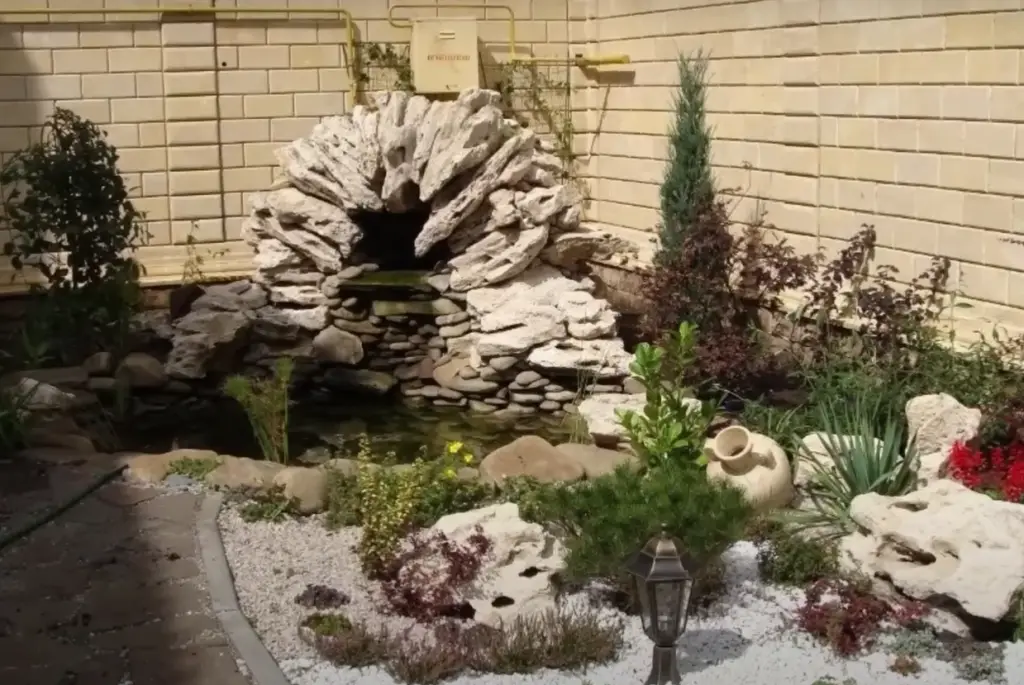
Make sure to mulch around the edges of the bed to prevent weeds from encroaching on your garden space. For a sustainable garden option, consider incorporating drought-resistant native plants that will thrive in sandy soils while providing shade and texture throughout the year.
Cottage Garden Style
The cottage garden style is a classic for landscaping in sandy soil. This look can be achieved by planting low-growing shrubs, evergreen groundcovers, and flowers that thrive in dry conditions. To give your cottage garden an extra touch of charm, add some creeping vines or small decorative trees and surround them with a white picket fence or rustic stone wall. Low-maintenance perennials are perfect for creating this timeless look because they don’t need to be replanted each year. Additionally, using drought-tolerant native plants will help you save money on water bills.
Black Eyed Susan Garden Path
A Black Eyed Susan Garden Path is a great way to make use of sandy soil. The black eyed susans are an ideal flower for sandy soils as they thrive in dry conditions and require minimal water. Plus, the bright yellow petals create a cheerful path winding through your garden. To create this look, plant black eyed susans along either side of the path and fill in any gaps with smaller flowers such as sweet alyssum or snapdragons.
Landscaping Island Garden Design
Island garden design is one of the most popular landscaping ideas for sandy soil. It is a great way to make use of the space around your house, while creating an attractive and functional outdoor living area. To create a successful island garden design, you should start by planning out the size of the main island area and then develop other islands to fit the overall plan. By adding small islands around the main island, you can create beautiful pathways that lead from one part of your yard to another. You can also add decorative elements such as water features, trees or flowers throughout the landscape for a unique look. When it comes to selecting plants for your island garden design, opt for ones that are well-suited to sandy soils like succulents, cacti and other drought-tolerant plants. This will help you create a low-maintenance landscape that requires minimal watering and care. Finally, be sure to add plenty of mulch or gravel around your islands to keep the soil from washing away during heavy rains.
Purple Flower Garden
Adding some color to your sandy soil is an excellent way to turn it into a focal point. One of the most beloved and classic landscaping ideas for sandy soil is a purple flower garden. Planting purple flowers introduces pops of color while still providing good ground cover. You can choose from various perennials that offer different shades of purple like lavender, irises, petunias, ageratum, daylilies and veronicas. You should always check your local gardening store for plants that do best in your specific climate.
Front Landscape Bed
When creating a landscape bed for sandy soil, you’ll want to pick plants with low water requirements. This will help ensure your plants don’t drown in the sandy soil since it doesn’t hold moisture well. Choose flowers and shrubs that can tolerate dry weather, such as sedum, yarrow, lavender, and rosemary. These drought-resistant plants will thrive in the hot sun without requiring much maintenance or irrigation. You can also use native grasses like bluestem to create a beautiful landscaped meadow look.
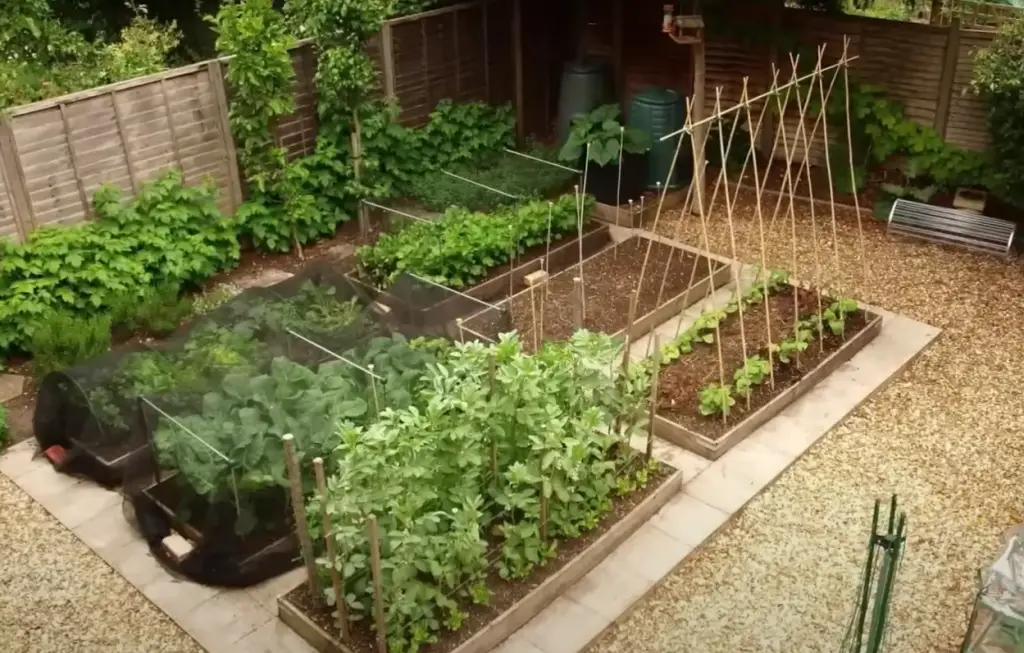
If you’re looking for more color in your landscape bed, consider using wildflowers like Black-Eyed Susan or Yellow Coneflower which require very little water once established. Adding some ornamental grasses like fountain grass and switchgrass will add texture to the landscape bed.
Garden Border With Salvia
If you’re looking for a way to create visual interest in your sandy soil garden, try planting a border with salvia. Salvia is a low-maintenance flowering perennial that thrives in sandy soil. Plant several different types of salvia together to create a stunning display of variegated foliage and colorful blooms throughout the growing season. To ensure that they don’t take over your garden, pinch off blossoms as soon as they finish blooming or trim them back by half after each flowering period. With regular pruning, your salvia border will remain neat and tidy without taking over the rest of the garden. If mildew becomes an issue due to wetness from heavy rainfall or morning dew, spray the plants with a fungicide. Finally, don’t forget to water and feed your salvia regularly; it will reward you with abundant blooms throughout the season!
Desert Garden
For those living in sandy soil landscapes, it’s possible to achieve a beautiful desert garden. To do this, choose plants that love the sun and can survive on little water such as cacti, succulents, and other drought-tolerant plants. For an even more unique look, layer different varieties of rock around your plants to create texture and natural color variations.
If you want to add some additional flair to your desert garden, consider adding some metal or wood sculptures for visual interest.
Lush Flowers Backyard
Having a sandy soil backyard can be extremely challenging if you want to grow lush flowers. However, with the right care and attention, you can create an amazing garden that will turn heads. Here are some tips for landscaping ideas for sandy soil:
- Choose plants that thrive in sandy soil. Plants like daisies, petunias, coneflowers, and lupines work well in these conditions since they require less water and fertilizer than other plants.
- Add organic matter to the soil to help retain moisture and provide nutrients for your plants. Compost is a great choice or consider using peat moss too as both of these materials help keep sand from blowing away in windy conditions.
- Mulch your flowerbeds to reduce water loss from evaporation and keep weeds away. The mulch also helps break up the soil, which can become hard or compacted over time.
- Water your plants deeply and often during hot weather since sandy soils dry out quickly. Try setting up a drip irrigation system or use a soaker hose for even water distribution throughout the garden area.
- Consider adding raised beds or container gardens to help control soil conditions and make it easier to maintain your gardens over time. This is especially helpful if you live in an area that experiences extreme temperatures because you can bring the containers indoors when needed.
Contemporary Sandy Garden
If you’re looking for a modern and contemporary garden, sandy soil is the perfect medium. You can create pathways that are lined with stones or wood chips, making them look ultra-modern with minimal effort. Plantings of shrubs and trees in containers will give a more natural feel to your yard while still having an up-to-date style. For added interest, add rocks or boulders here and there to create texture. When it comes time for watering, sandy soils tend to require less water than other types of soil, so you don’t have to worry about over-watering your plants. With a little creativity and elbow grease, you’ll be able to create a beautiful landscape in no time!
Perennial Sandy Landscape
If you have sandy soil, there is no need to be discouraged when it comes to landscaping. Sandy soil is actually quite beneficial for a variety of perennials as they do not require much moisture or nutrients. Here are some ideas for perennial plants that will thrive in your landscape:
- Hostas: These low maintenance perennials provide lush foliage and beautiful blooms from summer until late fall. They come in a variety of colors and shapes, making them perfect for any garden design.
- Lavender: This fragrant flower provides long-lasting color throughout the growing season. It’s also deer resistant and attracts pollinators like bees and butterflies.
- Sage: There are many varieties of sage that are suitable for sandy soil. The small leaves and grey-green foliage of this plant add texture to the landscape and its aromatic scent is a bonus.
- Butterfly Weed: This bright orange flower is an important host plant for butterflies and other beneficial insects. It’s drought tolerant and thrives in full sun conditions, making it perfect for hot and dry climates with sandy soil.
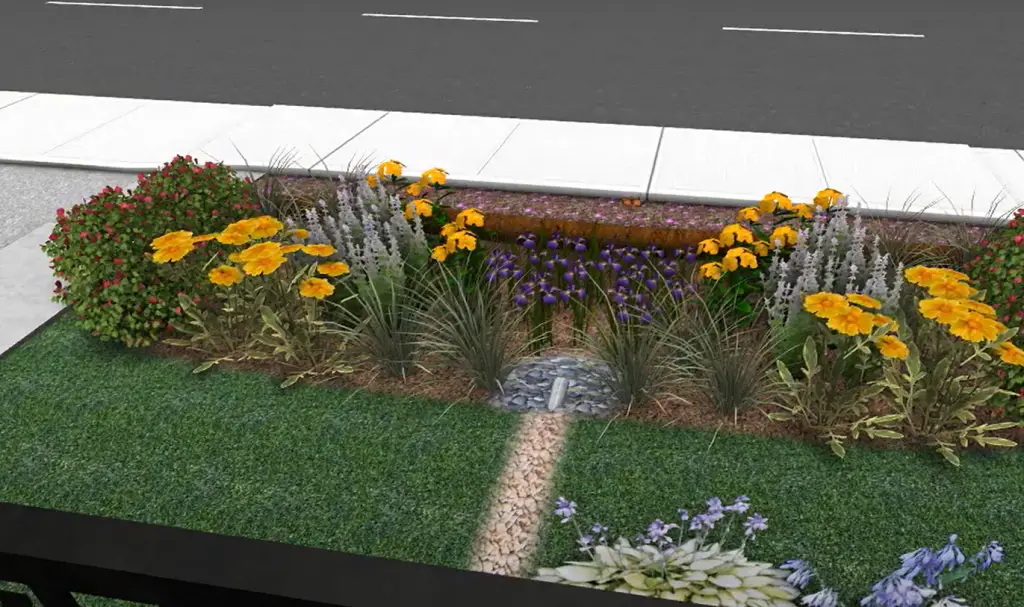
By using these perennials in your landscape, you can get creative while still having low maintenance plants that will thrive year after year.
Beautiful Garden Path
Garden paths provide a great way to add an attractive feature to your landscaping that can be enjoyed year-round. They also help with soil erosion control, drainage, and accessibility. When it comes to creating garden paths for sandy soil, there are a few things to keep in mind:
- Use materials that are easy on the environment as well as resistant to weathering – such as natural stone or recycled rubber pavers.
- Ensure that the pavers have enough depth so they don’t sink into the sand when wet.
- Avoid using gravel or pebbles in sandy soil; these materials will quickly settle and become uneven.
- Consider adding edging material along the sides of your path to help keep the soil in place.
Finally, you can enhance your garden path by adding plantings along either side. Consider using native plants that are adapted to sandy soil and will thrive in your backyard. Choose plants with different shapes, textures, and colors for a beautiful visual effect.
Green Landscaping On Sandy Soil
One of the best ways to make your sandy soil look amazing is to go for green landscaping. Planting trees and shrubs can help reduce erosion, conserve water, provide shade, create habitat for wildlife, and bring beauty to an otherwise dull landscape.
When planting trees and shrubs on sandy soil, it’s important to choose species that are adapted to the local climate and soils. Some suitable varieties of trees that do well in sandy soil include willow (Salix spp.), oak (Quercus spp.), poplar (Populus spp.), pine (Pinus spp.), beech (Fagus spp.) And maple (Acer spp.). Shrubs such as cotoneaster (Cotoneaster spp.), barberry (Berberis spp.), juniper (Juniperus spp.) And holly (Ilex spp.) Are also suitable.
When planting trees and shrubs, make sure to plan carefully so that they’re spaced far enough apart for their root systems to have adequate room to spread out. Planting too close together can lead to competition between plants for water and nutrients which will cause them all to struggle.
Once established, trees and shrubs can provide a great foundation for a green landscape in sandy soil. Adding other types of greenery such as ground covers, perennials and annuals can really add color and texture to an otherwise dull landscape. Some plants that do well in sandy soils include sedum (Sedum spp.), lavender (Lavandula spp.) And yarrow (Achillea spp.). Additionally, native wildflowers such as aster (Aster spp.) And coneflower (Echinacea spp.) Can also help bring natural beauty to a sandy landscape.
Layered Green Border
Creating a layered green border is one of the most popular landscaping ideas for sandy soil. The first step is to create a base layer, which can be done with shrubs or plants of your choice. This helps to keep the soil in place and prevent it from blowing away. After this, you can add more layers of color and texture by planting flowers, herbs, and other ornamental plants around the edges of your garden bed. Adding foliage and ground cover is also an excellent way to create texture in your design. For example, using small evergreens mixed with colorful annuals such as petunias will bring life to any sandy soil landscape.

By adding these layers, you’ll not only have an attractive design but also create an oasis for wildlife, like birds and butterflies.
Easy Grass Landscape
If you have sandy soil in your garden, you don’t need to despair. There is an easy grass landscape idea that can be used to make the most of the soil conditions.
The first step is to choose a variety of grass that is suitable for sandy soils such as Bermuda Grass or Zoysia Grass. These types of grasses are drought-tolerant and require less water and fertilizer than other varieties.
Next, make sure the soil is well drained by adding organic matter such as compost or mulch which will help retain moisture while improving nutrient levels in the soil. It’s also important to ensure proper irrigation – water should be applied on a regular basis and not too frequently so that the grass doesn’t become waterlogged.
Finally, fertilize regularly using a slow-release fertilizer which will help to keep the soil healthy and encourage new growth.
Bordering With Mondo Grass
Mondo grass is a great option for creating a border around your garden or landscaping project. It’s an evergreen, low-growing grass that grows in clumps and can be used to separate areas of the yard. This type of grass has shallow roots, so it will thrive in sandy soil. Additionally, mondo grass requires minimal maintenance and helps conserve moisture in the ground. When planting mondo grass, make sure to give each clump enough room to expand outward over time. Once it’s established, it will help suppress weeds and keep your lawn looking neat and tidy.
Desert House Landscaping
If you have sandy soil, you can still make your house look like a desert oasis. Desert landscapes provide an elegant and calming atmosphere to any home, and with the right landscaping ideas for sandy soil, you can create a beautiful space that is easy to maintain.
One of the best ways to start is by adding cacti as part of your landscape design. Cacti come in various shapes and sizes so it won’t be hard to find one that fits into your garden plans. They are also very low-maintenance plants that require little water or fertilization and will thrive in sandy soils. If you want something more unique, consider planting succulents which come in many different varieties from colorful foliage to unique blooms that can look stunning in a desert garden.
For ground cover, your best bet is to plant native grasses such as blue grama or purple threeawn. These grasses are well adapted to sandy soils and will provide the perfect backdrop for your other plants. For larger areas you can also use drought-tolerant shrubs like Artemisia ludoviciana. This low-maintenance shrub has fragrant leaves and silvery foliage and will create a beautiful contrast against flowers or succulents.
To complete your desert landscape design, consider adding decorative elements such as rocks or stones. Stones come in various colors so you could choose one that complements the plants in your garden and adds some visual interest. Rocks can also be used to create pathways or borders and will help keep your garden in shape for years to come.
Drought Tolerant Landscape
If you have sandy soil in your garden, chances are that it is also quite dry and prone to drought. To combat this, there are some plant varieties that are specially adapted for coping with arid conditions such as cacti, succulents, and other drought tolerant plants. You can create a stunning landscape by combining mulch with these plants. The mulch will help prevent water evaporation from the soil as well as protect the roots of the drought-resistant species from extreme temperature changes. Incorporating trees and shrubs into your design can also help provide shade and improve the air quality around your home. A great addition to sandy soils would be desert grasses which can add structure and color to an otherwise barren landscape.
Gravel Garden Layout
If you’re looking for a low-maintenance garden design that fits with sandy soil, consider setting up a gravel garden. Gravel gardens are easy to create and require minimal maintenance. They can also be very attractive and add character to your yard.
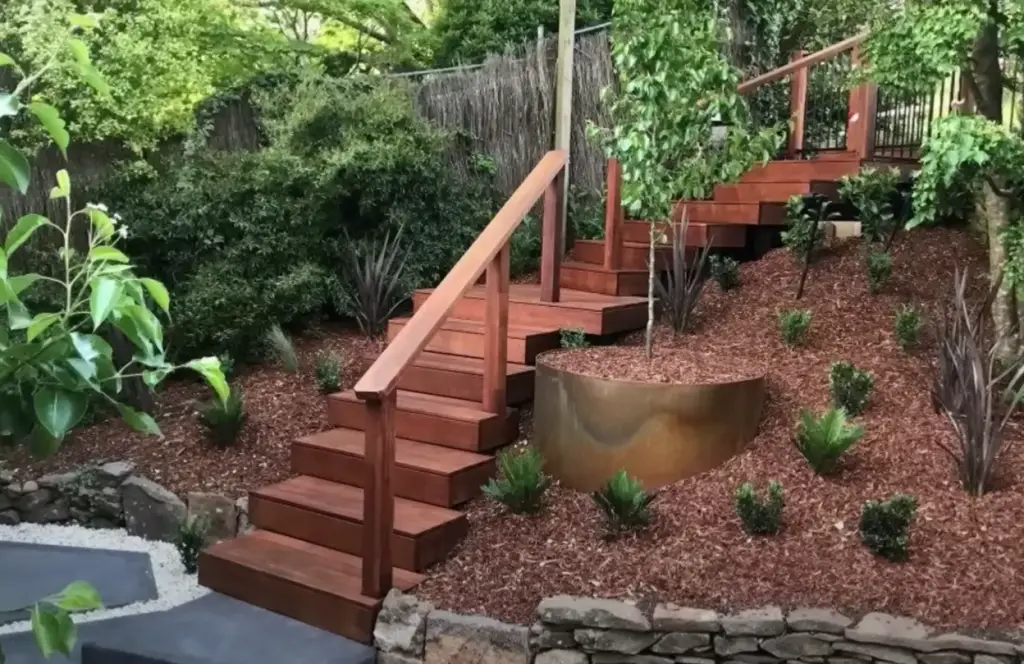
Start by selecting the right type of gravel for your area. Generally, larger stones will work best when it comes to preventing soil erosion in sandy soils. Consider using larger stone pebbles or cobblestones mixed with some smaller stones to create interest and texture in your garden layout. Once you’ve chosen the right gravel, begin laying out the path leading through your garden. This will help define the areas and create visual interest as well as provide an easier way of accessing the garden. [2]
For extra safety, use edging along the border of the gravel path to prevent soil erosion due to walking or wind. This will also help keep weeds from growing in your garden as well.
FAQ
What can I add to very sandy soil?
Adding organic matter, such as compost or manure, is one of the best things you can do to improve sandy soil. You can also add gypsum, which helps to bind particles together and improves water-holding capacity. Additionally, it’s important for your plants’ health that you provide them with adequate amounts of fertilizer. Fertilizers are especially important in sandy soils because they tend to be low in nutrients. It’s also a good idea to mulch around your plants to help keep moisture in the soil and reduce the risk of weeds taking over your garden. [3]
What is the best crop to plant in sandy soil?
There are a few crops that do best in sandy soil. These include vegetables such as tomatoes, peppers, and cucumbers, as well as root vegetables like carrots and potatoes. Herbs also grow well in sandy soil, including oregano, parsley and thyme. If you want to add a bit of color to your garden, flowers such as daisies and daylilies will thrive in sandy soil. Be sure to choose plants that require full sun exposure or some shade depending on the climate where you live. [4]
In addition to planting specific crops in sandy soil, there are some other strategies you can use for landscaping with this type of ground. For example, using mulch or compost can help retain moisture and provide essential nutrients. Layering several inches of mulch or compost over the top of sandy soil will help create a better environment for your plants to grow and thrive in. You can also add water-holding polymers to sandy soil, which will absorb up to 400 times its weight in water. This will help keep the moisture levels consistent and ensure that your plants don’t dry out during the hot summer months.
What is the best mulch for sandy soil?
Mulch plays an important role in landscaping, particularly when it comes to sandy soil. It helps to retain moisture in the soil and protects plants from extreme temperatures. When choosing a mulch for your sandy soil, one of the best options is organic mulches like shredded bark or wood chips, as these can help to improve soil texture over time. Other good options for sandy soils include straw and hay, pebbles or gravel, and even compost-enriched topsoil.
What is the best soil to mix with sandy soil?
When it comes to landscaping with sandy soil, the best way to improve it is by mixing in more nutrient-rich soils. A great choice for a mix-in is clay or silt, both of which are good at retaining water and nutrients. Compost is also an excellent choice as it will help to add organic matter and improve the fertility of your soil. You can either purchase pre-mixed garden soil from a garden center or make your own mixture using these ingredients. Another option is to use topsoil, although this should be used sparingly as too much topsoil can interfere with drainage and damage plants. Once you have mixed in the new components, you will need to prepare the soil for planting by thoroughly mixing it to ensure everything is evenly distributed. If you’re planting a large area, you may want to use a rototiller or similar equipment to do the job properly. [5]
Useful Video: The Garden Gurus – Solving Your Sandy Soil
Conclusion
Sandy soil can be a challenge to work with, but it doesn’t have to be daunting. With the right knowledge and tools, you can make your sandy soil landscape look fantastic. Whether you’re looking for ideas on how to add color and texture or just want to find ways to keep your sandy soil healthy, there are plenty of tips and tricks that you can take advantage of. Remember that the key is choosing plants and materials that will thrive in this environment, so paying attention to what grows best is essential.
References:
- https://www.gardenguides.com/12223112-ph-levels-of-sand.html
- https://thankyourgarden.com/landscaping-ideas-for-sandy-soil/
- https://www.searlesgardening.com.au/articles/improve-sandy-soils-for-planting
- https://www.agrifarming.in/crops-suitable-for-sandy-soil-a-full-guide
- https://www.grow-it-organically.com/gardening-in-sandy-soil.html










Leave a Reply
View Comments